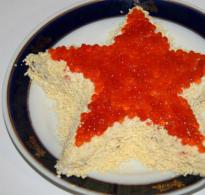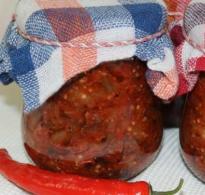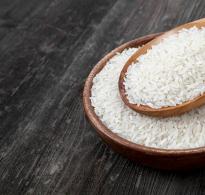What is dessert? Interesting facts about sweets that you didn't know.
The word "candy" comes from 16th-century European apothecary jargon. This word, derived from the Latin confectum (“made”), was the name of candied fruits, which at that time were considered a type of medicine.
Interesting fact: in medieval Italy it was customary to shower newlyweds with small candied pieces of fruit called “confetti.” Over time, sweets were replaced with pieces of multi-colored paper, to which this name “migrated”.
Interesting fact: a study by American sociologists showed that people who treat their colleagues with candy are more successful in their careers than their “greedy” competitors.
In the first half of the 19th century in Russia, even the richest and most noble ladies stole candy from various celebrations. This was explained by the fact that confectionery factories did not yet exist, the sweets were prepared by home confectioners who jealously guarded their secrets, so this delicacy was literally worth its weight in gold.
Paradox: the name of the most common sweet, chocolate, comes from the Aztec word “chocolatl,” which translates as “bitter water.”
Interesting fact: in Europe of the 16th-17th centuries, real “chocolate mania” was observed among aristocrats. Many believed that chocolate has an almost magical effect on the body. Sometimes even adultery was blamed on him: there is a known case when a court lady justified the birth of a black child with her excessive passion for chocolate.
The largest box of chocolates was made by confectioners from Master Food for an international culinary competition. In a box 2.5 by 1.5 meters there were about 8 quintals of chocolates.
In Belgium, chocolates are quite expensive: about 30-35 euros per kilogram. The fact is that almost 90% of this delicacy in the country is produced manually. unique recipes– hence the high prices.
The largest truffle candy in the world was made in 2008 in Germany. This giant sweet, weighing 196.3 kg, was created by confectioners from Halloren Chocolate Factory.
The largest toffee in the world was made in Norway. This delicacy weighs more than 1.5 tons.
In 2004, confectioners from the Dutch company Mieke Stortelder created the longest candy in the world - a strawberry candy over 2 meters long.
A box of the most expensive chocolates in the world - Lake Forest Confections - costs approximately $1.5 million. True, their high price is mainly due to the design of the box, which is decorated with diamonds, emeralds, sapphires and rubies.
The largest gummy bear was prepared by specialists from Gummi Bear Factory. The height of this “candy” was 1.7 meters, and its weight was 630 kilograms.
Interesting fact: in English-speaking countries, the word marmalade exclusively refers to citrus fruit jam. The marmalade we are used to is called there with the cumbersome phrase candied fruit jelly.
It turns out that there is an analogue of the Bertie Botts candy from the Harry Potter books on sale. BeanBoozled jelly beans also have the most different tastes, both the usual fruit ones and very strange ones, for example, vomiting, rotten egg and skunk secretions.
The first space candies were the famous Chupa Chups. In 1995, cosmonauts from the Russian Mir station asked for some candy to be delivered to them. Chupa Chups caramels were considered the most suitable for zero-gravity conditions and were delivered to the space station.
Another very interesting fact is connected with Chupa Chups: the logo for these lollipops was designed by Salvador Dali himself!
Japanese schoolchildren take Kit Kat chocolates with them to exams, believing that they bring good luck. The fact is that their name is consonant with the Japanese expression “kitto katsu” - “sure to win.”
Interesting fact: there is a “cosmic halva”. Asteroid No. 518 is called “Halva”, since the astronomer R. Dugan who discovered it adored this oriental sweetness.
The famous Chinese fortune cookies that are sold everywhere in the United States actually have nothing to do with China. Similar cookies were used during religious ceremonies at Shinto shrines in Japan in the 19th century, arriving in the United States in the early 20th century with Japanese immigrants. Because the American government imprisoned all Japanese (including bakers) in filtration camps during World War II, fortune cookies began to be mass-produced by the Chinese. That is why Americans now associate this delicacy with China.
Don't believe that eating sweets is harmful. There are sweets that are very healthy to eat. Of course, in reasonable quantities

- Marmalade
Marmalade translated from German “marmelade” means jam. In Europe, marmalade became famous after the Crusades in Asia. It is the historical birthplace of the delicacy. Healthy marmalade considered due to its content of pectin and sometimes agar-agar ( vegetable substitute gelatin). Pectin reduces the risk of cholesterol disease and takes care of the skin. Agar-agar has a positive effect on the liver and removes toxins from the body. Also, real marmalade does not contain fat.

- Chocolate
The name of the most favorite product of those with a sweet tooth, according to one version, comes from the Aztec word “xocolātl” - the name of a drink made from cocoa beans, literally meaning “bitter water”. The birthplace of chocolate is South America.
Chocolate is very useful: this sweetness regulates the work digestive system, removes toxins from the body, and is also a source of antioxidants and iron. Chocolate supports mental activity and improves mood. Even the smell of chocolate calms you down and relieves stress.
Thanks to high content flavonols in cocoa beans daily use A small portion of dark chocolate can protect the skin from the negative effects of sun rays and, accordingly, slow down the aging process. However, as researchers warn, we are talking specifically about dark chocolate, if consumed milk chocolate no such effect occurs.
Eating dark chocolate may improve blood flow, reduce the risk of blood clots and even protect against bowel cancer. Swedish scientists have found that people who suffer from heart disease can reduce their risk of dying from a heart attack by 70% by consuming dark chocolate at least twice a week.
ABOUT beneficial properties dark chocolate has been known for a long time. In particular, it has been proven that it protects against stress, syndrome chronic fatigue and improves mood. Danish doctors also came to the conclusion that dark chocolates can help you lose weight, as they create a feeling of fullness for a long time and allow you to eat less.
Chocolate also stimulates the heart and brain more than kissing. When high from eating chocolate, the heart beat doubles, and all areas of the brain experience prolonged and intense stimulation.

- Marshmallow
The origin of marshmallow is still not known exactly. Some believe that marshmallow was invented in Greece and named after the god of light wind Zephyr, others believe that the birthplace of this delicacy is the East and it is a relative of Turkish delight and nougat. Marshmallow, like marmalade, contains pectin, as well as protein, phosphorus, iron and a lot of carbohydrates. Marshmallows, compared to other sweets, are low in calories: 100g contains only 300 calories. Marshmallow is recommended for children and teenagers, as it stimulates brain activity.

Honey is the oldest sweetener. Historically, Russia has been among the world's largest honey producers. But at the moment she has lost her position. Globally, honey is produced in China, France, Kazakhstan, Greece and Australia. Everyone has long known about the beneficial properties of honey: it contains fructose and glucose, minerals - potassium, magnesium, calcium, sulfur, chlorine, sodium, phosphate and iron. Honey is rich in vitamins B1, B2, B6, B3, B5 and C. Honey contains something like a natural energy booster: it allows you to exercise longer. In addition, honey heals wounds and treats anemia.

- Wagashi
Traditional japanese dessert. Exotic, just like sushi. Wagashi is prepared from natural products: legumes (mainly red beans - adzuki), rice, various types sweet potatoes, agar-agar, chestnuts, various herbs and teas. There are more than 25 types of this dessert and its preparation requires special skill. IN upper strata In Japanese society, it was considered a sign of good manners to serve sweets in a variety of exquisite forms for tea drinking. IN modern society The wagashi aesthetic remains unchanged.
Wagashi have a less sweet taste than the sweets familiar to Europeans. They may even seem completely unsweetened to people who are not used to them.
Do you want to know a lot of interesting things about candy? Which candy has been to space and returned to earth, and which candy is the largest? These and others amazing facts about candies - in our article "10 amazing facts about candies."
Old, good oatmeal cookies- Well, who the hell knows. This taste is familiar to almost everyone who was born in the USSR, and even now this type cookies are known to modern gourmets. However, few people know about amazing facts about him:
Black candies with spicy taste Anise is both a delicacy and a licorice medicine. Find out what they are made from and the most popular types- in five facts.
Water is an important source of energy for the body. It enriches cells with oxygen and renews them daily, preventing obesity. It is believed that you should drink at least 2 liters of fluid daily. Besides clean water, scientists also advised including several more drinks rich in vitamins and nutrients in your diet.
We bring to your attention a number of interesting and little-known facts about sweets from all over the world!
Marzipan is a mixture of almonds ground to a powdery state with powdered sugar in the form of an elastic paste. Marzipan sweets and decorative elements can be painted or glazed (sugar, chocolate and lemon glaze), or remain without glaze.
Don't believe that eating sweets is harmful. There are sweets that are very healthy to eat. Of course, in reasonable quantities.
After all, it’s true that men with a sweet tooth are very rare. If you ask a woman to choose her favorite food, she will most likely take a chocolate bar, a piece of cake, or fruit. And the man? He will put meat, sausage or frankfurters on the plate. Scientists have proven that female body sweets are often simply necessary, this is due to the effect of the sex hormones estrogen on brain tissue and blood sugar levels.
Chocolate appeared in the life of mankind a very long time ago, about 3000 years ago. Then the Mayan civilization began the cultivation of the cocoa tree and the production of chocolate, which at that time had the name " kakawa". Gorky and aromatic drink made from crushed and heated cocoa beans mixed with water, it was called the drink of the gods.
Treats in Japan include not only sweets and pastries, but also fruits and nuts. The Japanese learned about the prepared sweets only at the end of the 8th century, after the appearance of Chinese courtiers on the tables. confectionery, which were made from a mixture of glutinous rice and wheat flour.
"translated from Latin as “prepared medicine.” In the 16th century, candied fruits were sold in pharmacies for medicinal purposes. Nowadays the term refers to a wider range of confectionery products.
- In German, marmalade is translated as “jam.” Marmalade appeared in Europe after the Crusades in Asia. Asia is the birthplace of these sweets. Marmalade is considered one of the most healthy sweets, which contains pectin. Pectin reduces the risk of cholesterol, is good for the skin and does not contain fat.
- The word for those with a sweet tooth, “chocolate,” comes from the Aztec word for “bitter water.” Initially, they only drank chocolate.
- In Bavaria they prefer candies with beer filling, and in France they prefer cheese sweets. Each country has its own sweets that differ in taste and ingredients. Sweets are not always sweet, as it turns out, and many people cook without adding sugar.
- Japanese students take Kit Kat chocolates with them to exams as talismans. This is explained by the fact that “Kit Kat” is consonant with “Kitto Katsu” (“sure to win”).
- Finnish sweets are rightfully considered the most unusual sweets in the world. The Finns prepare them sour, salty for beer - the tastes are different, but the sweets are without sugar.
- The Chupa Chups logo was drawn by Salvador Dali. It remained virtually unchanged and has survived to this day.

- “I’ve got chocolate” - best way win over a person. For example, American psychologists claim that those who treat the “right” colleagues more often climb the career ladder faster than their opponents.
- Switzerland has not only expensive watches, but also sweets. For example, candies in edible candy wrappers that are covered with real gold threads. This piece of confectionery will cost $100.
- The very first chocolate candy is - paraline. It was first prepared by a chef for a foreign ambassador and is currently one of the most famous and popular sweets in Switzerland and Germany.
- During the Christmas holidays, the French eat about 36,000 tons of sweets.
- Dark and bitter chocolate are the healthiest. Eating a small amount of dark chocolate every day will protect against sun damage and prevent premature skin aging. Dark chocolate improves blood flow and reduces the risk of blood clots.
- It is recommended to eat dark chocolate rather than milk and white chocolate. It is important not to overeat, optimally 30-50 grams per day.
- July 11 is World Chocolate Day. All those with a sweet tooth stock up on sweets and celebrate.
- Coffee candies improve mental and physical activity, increases reaction and reduces fatigue and drowsiness.
- British scientists have proven that eating dark chocolate prevents premature aging, and dark chocolate is very useful for losing weight. It reduces cravings for salty and sweet foods. 100 grams of dark chocolate can satisfy hunger and reduce appetite.
Dessert is a sweet dish served after the main dish (and not being the main dish), at the end of the meal.
The term is borrowed from French. dessert, from French desservir, which translates as “to clear the table.”
As a rule, it is sweet (for example, cake or ice cream), but there are also unsweetened desserts made from fruits and/or nuts without added sugar/honey. Additionally, not all sweet dishes are desserts, e.g. Chinese cuisine there are sweet ones meat dishes(example - pork with pineapple), which are not desserts. In China, you can also find candies with pepper and ginger instead of sugar. Before Europeans arrived, Native Americans made chocolate with peppers and spices instead of sugar. Dessert can consist of cheeses, pies, etc. Even in Russian cuisine there are unsweetened desserts - for example, black caviar. Classic French dessert considered cheese.
Dessert is baked goods: cakes, cookies, waffles, muffins, pies; various types of sweets, marshmallows, whipped cream dishes; sweet fruit and berry mixtures (so-called fruit salads); juices, soda waters, compotes, jelly; sweet milk, chocolate and fruit and berry mousses, creams, jellies; ice cream and ice cream desserts; dessert can be tea, cocoa, coffee, coffee with ice cream (café glacé); special dessert wines- in a word, everything that can be submitted to the “third”.
Based on serving temperature, desserts are divided into hot and cold. Desserts are usually served in special dessert plates. Desserts are usually eaten dessert spoon- intermediate in size between a soup spoon and a teaspoon. The dessert table is also served with a dessert knife and dessert fork.
With all their diversity, dessert recipes can be divided into three main types:
)mono-ingredient;
)polyingredient;
) complex in texture.
Mono-ingredient dishes typically consist of one main fruit that is baked or cut into a fancy shape. It is served with a garnish in the form of mint, flowers or a special soft sauce with ice cream. On culinary portal Delicious.ru recipes for such desserts can be found in this section.
Multi-ingredient dishes are already more difficult to prepare, since they consist of two or more components that must be combined with each other. This could be a cocktail glass filled with fruit salad or homemade ice cream. Delicious and easy recipes desserts for children can also be beautifully diversified festive table, making multi-tiered compositions from fruits and ice cream.
Textural dishes involve more than just laying out prepared ingredients as a side dish and decoration. They can also be served with baked goods or fancy frozen chocolate arrangements. Dessert recipes with similar additional gastronomic accessories can also be found in the collection of our portal. In addition, you can combine them with each other, thereby creating your own dish.
 Correct recipes desserts
Correct recipes desserts
The main purpose of dessert is to complete a meal, and not to completely fill the stomach, but to smooth out the effect of all previous dishes. Currently, the true historical meaning of this word is being distorted. The French meant dessert light dish, airy, they came up with recipes for desserts that have a refreshing, invigorating effect.
That is why, in a truly French sense, the category of desserts includes fresh berries jelly, varied in taste and color, fresh fruits, freshly squeezed juices. Desserts made from these products taste slightly sour, but not too sweet. Modern recipes real desserts take this feature into account.
Variety of dessert recipes
There are many types of desserts in modern and traditional cuisine. But all dessert recipes can be divided into several large categories:
Cold: the temperature of these desserts is quite low.
Hot: desserts with high temperature. This group includes drinks such as tea, cocoa, coffee, coffee drinks. Their advantage is that they provide positive impact in several directions: they accelerate the passage of food through the digestive tract, energize, and improve mood.
Interesting facts about desserts
- True gourmets and lovers of exquisite sweet dishes prefer desserts that contain one ingredient that only wealthy clients can afford. This ingredient is a diamond! It is added to dessert as a decoration and a sign of the quality of the dish being served. The most various desserts the world can boast of such a “zest”.
- The cost of such a dessert can reach several thousand dollars!
- According to people who have tried this dessert, the diamonds included in the dessert are not only excellent and original decoration, but also add to the dessert exquisite taste and even the aroma!

- Ordering strawberry dessert at the historic Arnaud's restaurant in New Orleans, don't forget to look at the price tag: for a special order for $1.4 million, the restaurant's chef will prepare for you a signature dish - strawberries marinated in port wine with mint and cream, decorated with a gold ring with a pink diamond weighing 5 carat, which belonged to the prominent British financier Sir Ernest Cassel. You will be offered to taste this splendor accompanied by live jazz in a separate room inside the restaurant or on the balcony overlooking the famous Bourbon Street.
- Located in one of the resorts in Sri Lanka, the Wine3 restaurant has been trying for a year to ruin its visitors out of 14.5 thousand dollars, for which they offer the luxurious dessert The Fortress Stilt Fisherman Indulgence. The dish consists of Italian cassata (a Neapolitan type of ice cream with candies, dried fruits and nuts) made from golden leaf and flavored Irish cream. Inside the fragile structure, imitating a fishing net, there are mango, pomegranate and sabayon with the addition of champagne, and the cake is joined by a chocolate structure with a fisherman sitting above a large aquamarine.
- World famous chef Pierre Hermé creates the most amazing macaroons, the cost of which is more than 7.5 thousand dollars. The composition of cookies, in addition to traditional chocolate ganache, the cook adds rare seasonings and additives such as fleur-de-sel and balsamic vinegar, thanks to which the dessert acquires a refined and unusual taste.
 “The Sultan's Golden Pie” is a delicacy that is not so dramatically expensive, but promises to pamper your taste buds no worse than previous desserts. Created within 72 hours, the cake is a brick of edible 24-karat gold, hiding juicy apricots, pears, quince, figs marinated in Jamaican rum and finely chopped black truffles. The dessert is served in a custom sterling silver box with a gold stamp. Price - 1 thousand dollars.
“The Sultan's Golden Pie” is a delicacy that is not so dramatically expensive, but promises to pamper your taste buds no worse than previous desserts. Created within 72 hours, the cake is a brick of edible 24-karat gold, hiding juicy apricots, pears, quince, figs marinated in Jamaican rum and finely chopped black truffles. The dessert is served in a custom sterling silver box with a gold stamp. Price - 1 thousand dollars.- The Italian restaurant of the Bangkok Lebua hotel will pamper you with a composition of various delicacies: sherbet from Louis Roederer Cristal Brut 2000, leaves of edible gold, a small glass of creme brulee and Perigord truffles, chocolate-strawberry mousse and a piece of amazing chocolate pie. You can feel the heavenly sweetness of the dessert in contrast with a glass of Moyet Tres Vieille Grande Champagne No. 7. Cost - $640.
- Madeleine Truffle chocolate balls from the American company Knipschildt Chocolatier cost $250 each and consist of French Valrhona chocolate and fresh cream, whipped for 24 hours with vanilla bean flakes and pure truffle oil, dipped in chocolate and cocoa powder. The process of creating chocolates takes a lot of time and effort, so they are prepared only to order and served in a silver box with a personal note from confectioner Fritz Knipschildt.
 Chef Marc Guibert, who works at the Lindeth Howe Country House Hotel, has created the world's most expensive dessert. He became chocolate pudding with champagne jelly and expensive cookies, decorated with pieces of gold and a 2-carat diamond.
Chef Marc Guibert, who works at the Lindeth Howe Country House Hotel, has created the world's most expensive dessert. He became chocolate pudding with champagne jelly and expensive cookies, decorated with pieces of gold and a 2-carat diamond.- A $34,000 pudding looks like a lot golden egg Faberge. It is made from 4 the best varieties Belgian chocolate and must be ordered 3 weeks in advance so that the chef has time to prepare the sweetness at its best.
- In honor of the famous ballerina Anna Pavlova, who toured Australia in 1926, the dessert was named - meringue cake with fresh fruit. Exact time and the place of invention of the dessert has not been established and is the subject of a protracted dispute between New Zealanders and Australians.






